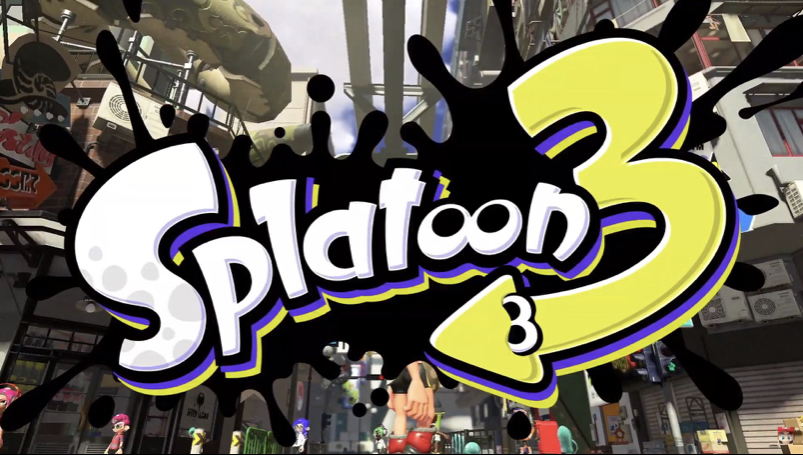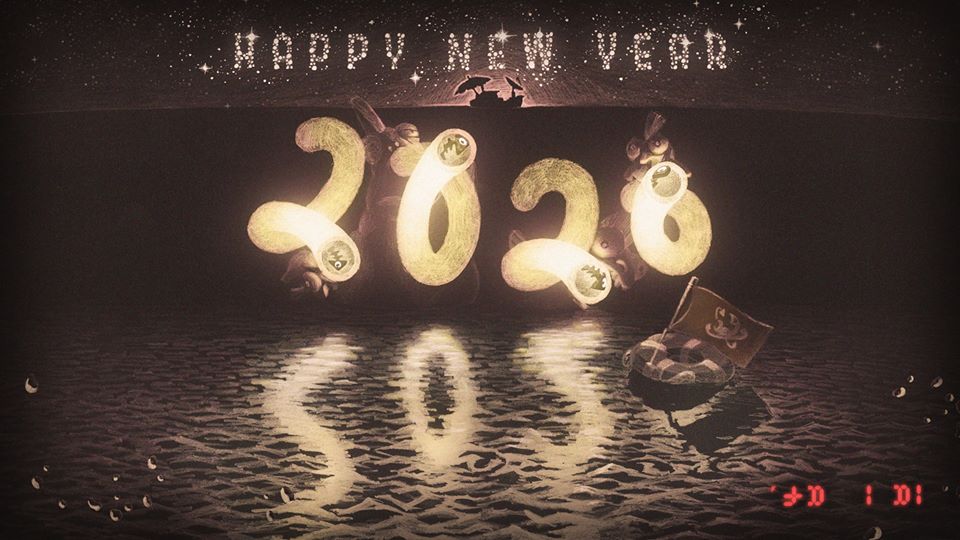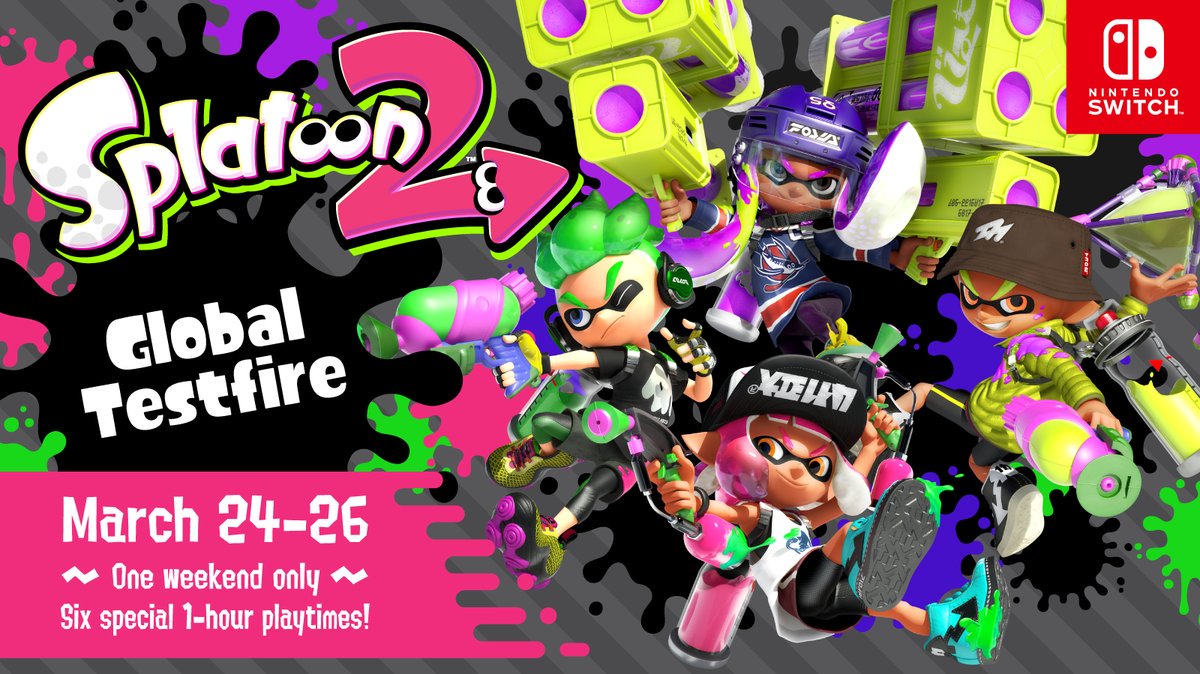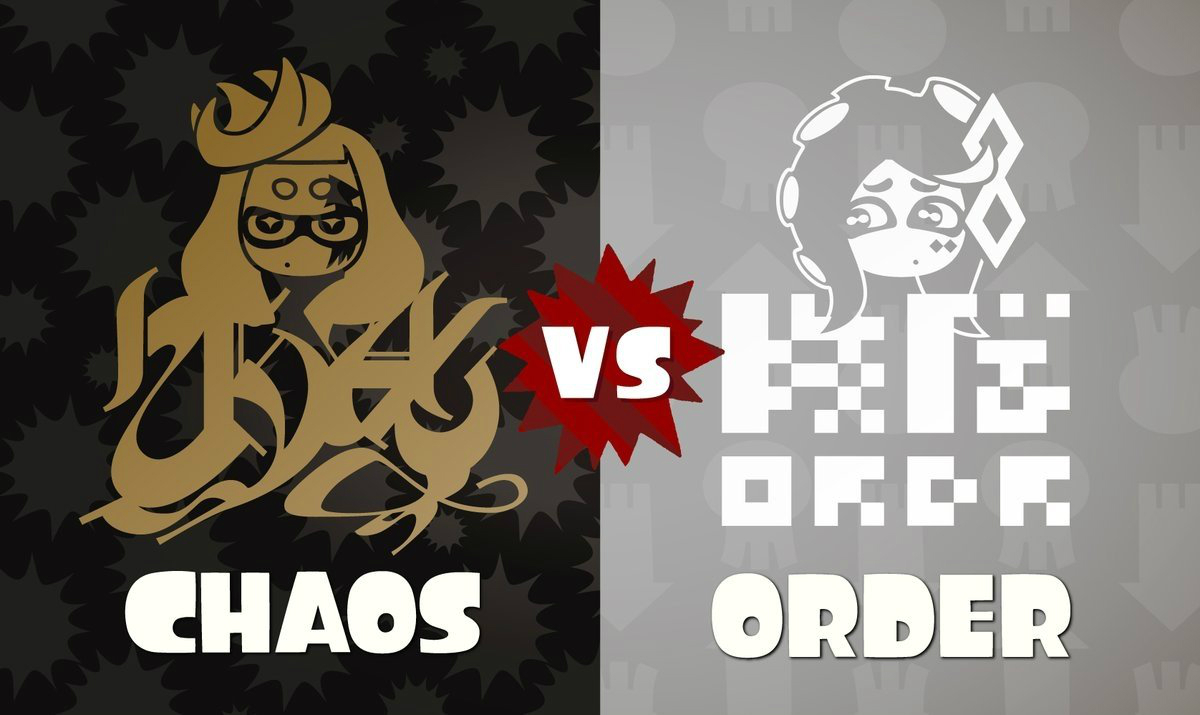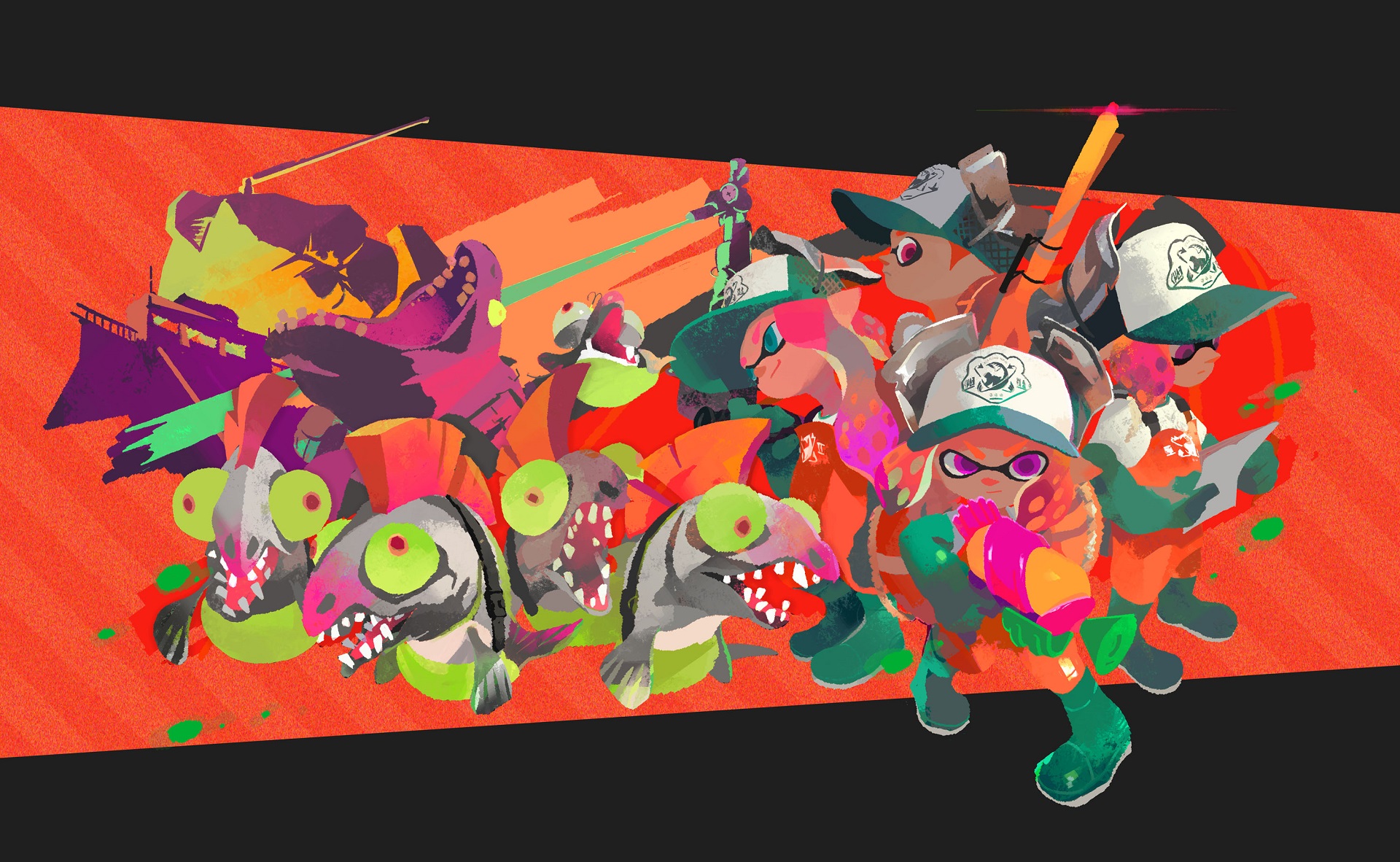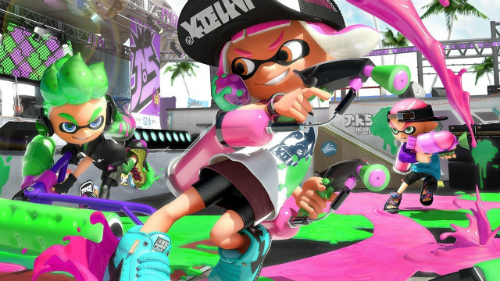
The original Splatoon was a surprise hit. Not only was the game an original IP but it was also a third person shooter; a genre that you just wouldn’t normally associate with Nintendo. Yet they developed the game with its own distinctive style, making it fun and accessible to gamers of all ages and providing the Wii U with a needed exclusive, must-have title. As the saying goes “if it ain’t broke, why fix it?”, so with Splatoon 2 Nintendo have played it safe by offering a refined sequel that keeps the core game in tact but makes improvements in areas such as single-player.
For those that missed out on Splatoon on Wii U, the game is a team-based third person shooter themed around squid humanoids that shoot ink instead of bullets. Each team’s ink is a different colour, and you will take damage and slow down if you walk over enemy ink. But, you can shoot your own ink over the top of the enemy’s, reversing the effects. You have the ability to turn into a small squid that can “swim” in your own team’s ink to traverse an area more quickly and also hide from opponents.
Players are armed with a weapon, a sub weapon and a special ability. Weapons range from typical gun-like shooters and sniper rifles, to more unique offerings such as ink rollers which are just like normal paint rollers and spread ink quickly across a stage while also steamrolling enemies. New to Splatoon 2 are the Dualies which are two handguns that offer rapid fire and grant players a special dodge move, and the Splat Brella which is a weaponised umbrella that can shield players from enemy ink and also act as a type of shotgun for close range, widespread attacks. Sub Weapons act as different types of grenades while special abilities are crowd controller moves that can only be used once a meter has been filled.
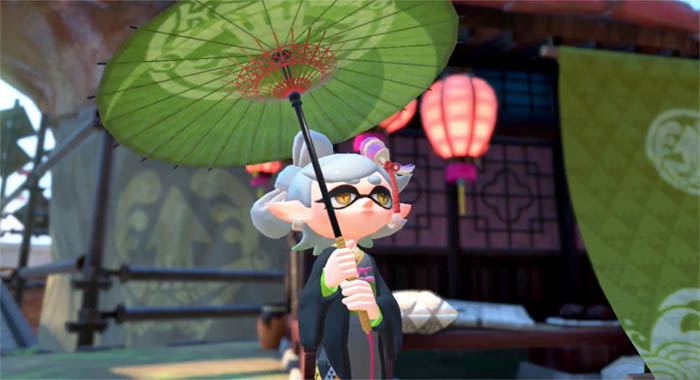
Another key component of the games is customisation – as well as your Inkling’s appearance, you can change their gear loadout including headgear, shirts and shoes. These items will have enhancements for your Inkling, such as reducing the amount of ink they use when firing weapons, increasing their speed or shortening the time it takes to respawn. There’s a lot of fun to be had from changing your equipment to suit different play styles, and Splatoon 2 offers enough new content that even seasoned veterans will be appeased. The base gameplay hasn’t changed for the sequel, but it doesn’t need to and is still highly enjoyable.
Splatoon 2’s Hero Mode (single-player) is set two years after the original game. Marie, one of the Squid Sisters, enlists the help of the player to find her missing sibling, Callie. The Great Zapfish which powers Inkopolis has also gone missing, so no doubt the two disappearances are linked to the Octarians. Much like the first game, Hero Modes serves largely as an extended tutorial to introduce players to the mechanics of Splatoon. This time however the narrative is a little more engaging; referencing various characters and events from the previous game, while the tutorial side is also more thorough.
After the first few missions, levels will centre around players testing new weapons and sub-weapons which can later be purchased (with in-game money) for use in multiplayer. This allows players to get a better feel for how each weapon is used in a controlled environment, showcasing the strengths and weaknesses and applying them to everything that has been learned prior. You can later go back and replay the levels using other weapons to see how they stack up against the same scenarios, while also locating hidden objects that unlock side story content. For taking the time to complete Hero Mode, players are awarded with Food Tickets which can be redeemed at Crusty Sean’s food van to gain experience and money boosts in multiplayer matches. It takes that extra step in unifying the single-player and multiplayer modes.
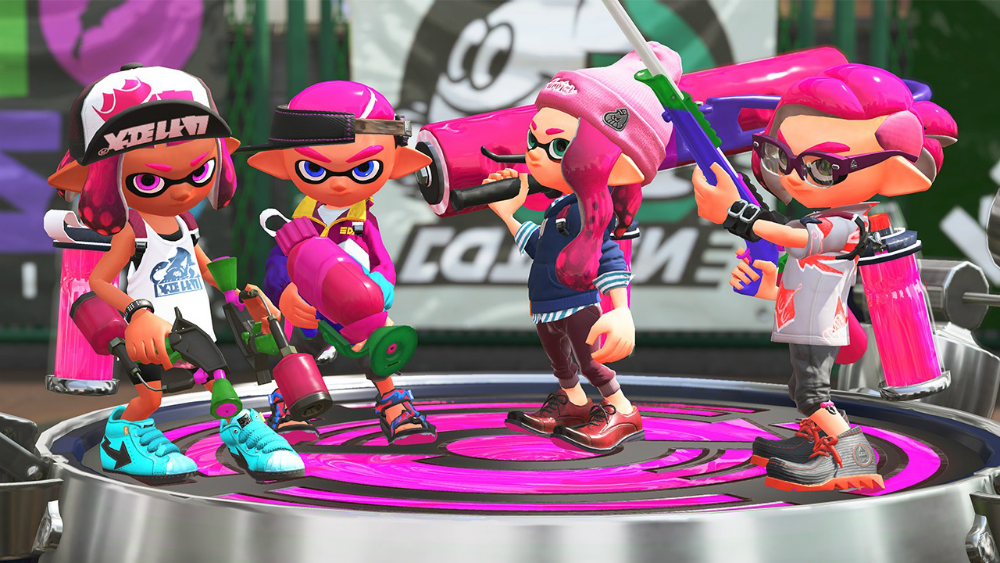
As is the case with most Switch games, players have the option to play in both docked and undocked modes. Splatoon 2 allows you to set separate customisation options for each mode, including sensitivity and if you use motion controls to aim or the traditional control stick. The motion controls worked well for aiming as they were responsive and accurate but personally I preferred using traditional controls, particularly when on public transport to avoid strange looks from other passengers!
Splatoon 2 features the same online multiplayer modes as its predecessor; Turf War, Rainmaker, Splat Zones and Tower Control. The casual Turf War is where teams compete to cover the stage with the most ink, and Rainmaker is a reverse capture the flag where you must carry the Rainmaker weapon to the opposing team’s base. Splat Zones is similar to a King of the Hill-type mode where teams fight to control the most areas on a map, and Tower Control sees players fight to control a moving tower that travels towards the opposing team’s goal. There have been some tweaks to the modes, such as checkpoints being featured in Tower Control and the Rainmaker item now shooting out balls of ink, but they’re largely the same. At least this time they’re available to play from launch, instead of post-launch content updates that Nintendo released for the original Splatoon.
There is one new mode called Salmon Run, which is a four player cooperative horde mode where players must defeat salmonid enemies and collect their eggs before a timer runs out. This mode can be played at any time via local multiplayer (sadly each player must have their own Switch console and a copy of the game – no splitscreen!) or at special designated times online. Unfortunately we did not get the opportunity to try out this mode at the time of review.
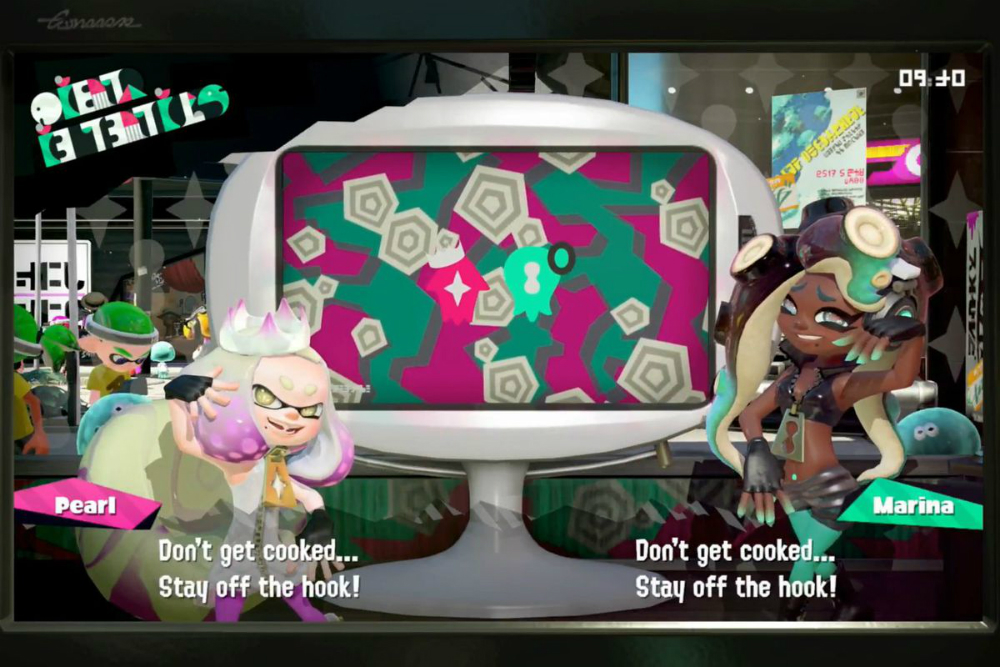
Herein lies one of Splatoon 2’s main areas of concern – at times it feels like content is locked behind time constraints. For online multiplayer, each mode will only have two different stages available for a period of two hours. After this timeframe, the stages are cycled through to a different set. Most online games these days will randomly select a number of stages from the entire catalogue and let players vote on which one they battle on next. Even player Gear for purchase is cycled through at different intervals.
Between matches there also isn’t the option to select a different loadout. You have to exit out of multiplayer entirely to switch gear and weapons. By the time you log back in you will have almost certainly lost the party you were playing with, which can be offputting if you have been getting a steady flow of close matches where neither side has a huge advantage. It just feels like Nintendo are a step behind the current online shooter scene, which is a shame as Splatoon 2 is a worthy successor and the franchise as a whole is unique and engaging for all ages.
Despite these comments, it’s worth mentioning that online match making is fast and efficient. It takes anywhere between mere seconds to a minute to get into a match depending on how many players are online, and I can honestly say I haven’t experienced any major lag during my online sessions. On the game’s launch day I was abruptly booted from my game session a handful of times, though it’s unclear if this was my own internet connection or the Nintendo servers. It wasn’t constant enough for me to lower my opinion of Splatoon 2.
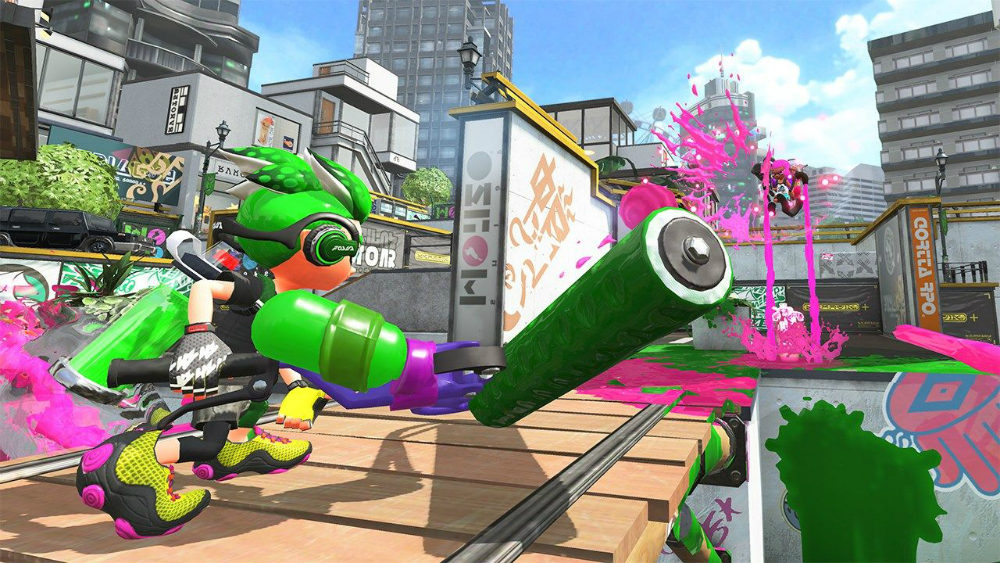
Those who have a smartphone may wish to download the Nintendo Switch Online app which allows you to pull up stats for Splatoon 2. The app can be used to keep track of your match results and, more interestingly, purchase seemingly exclusive gear with your in-game money. I haven’t had the opportunity to try out the online chat functionality via the app, though reportedly it is poorly implemented largely due to the screen needing to be left on and app open constantly. Hopefully Nintendo take the feedback on board and provide a better experience for online chat, but otherwise it’s a semi-decent companion app to keep track of stats.
Splatoon 2 has been given an extra coat of polish from its predecessor. The game runs at a constant 60 frames per second, with only the main hub area of Inkopolis Square showing any signs of slowdown after it initially loads. Characters and ink all look fantastic, in a vibrant display of colour and motion. There are some reused and remixed music tracks from the original game, which fit in well with the game’s overall quirky style. I have to admit, I found myself remembering and even humming the tunes when I had long turned my Nintendo Switch off.
Splatoon 2 is a worthy successor to the now established Nintendo franchise. It doesn’t necessarily change much from its predecessor, but instead improves upon the single player experience while adding new weapons and gear, one new co-op mode and enhancing the overall experience. There are some issues with design decisions, namely content being locked behind time constraints and being unable to change loadouts between matches, but ultimately Splatoon 2 should not be missed by any Switch owner.
- Improved single-player experience - Easy and fast matchmaking - New weapons and gear to try out
- Content locked behind time constraints - Can't change loadout between matches

